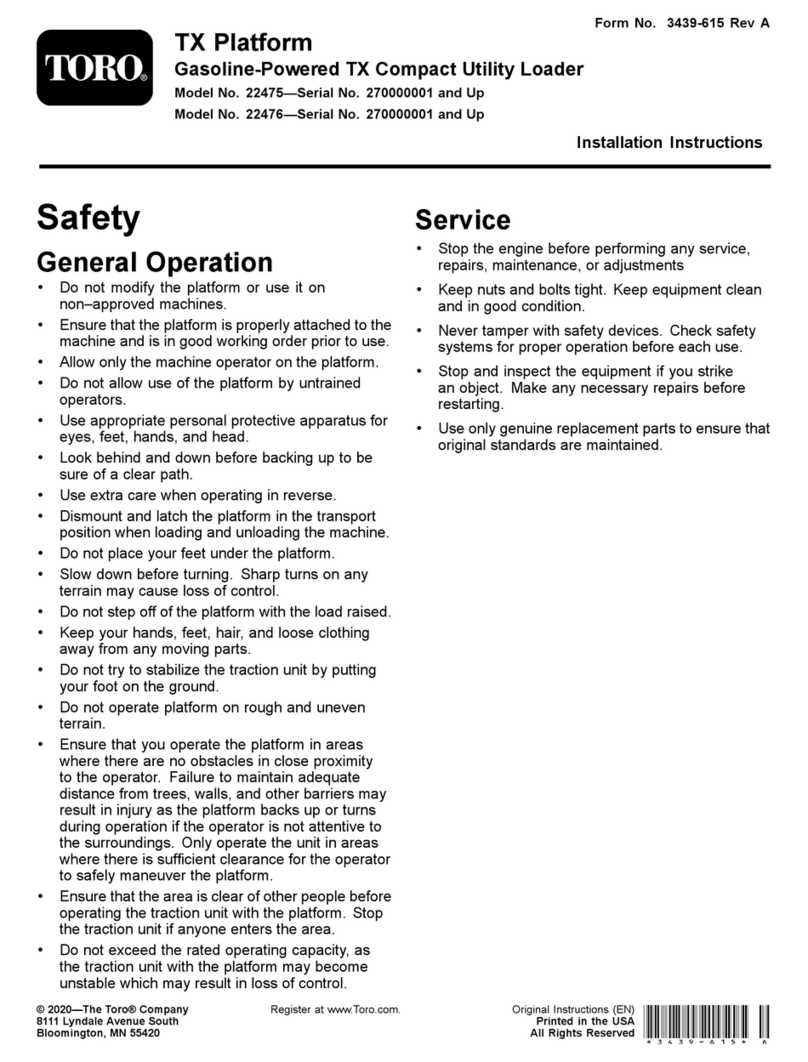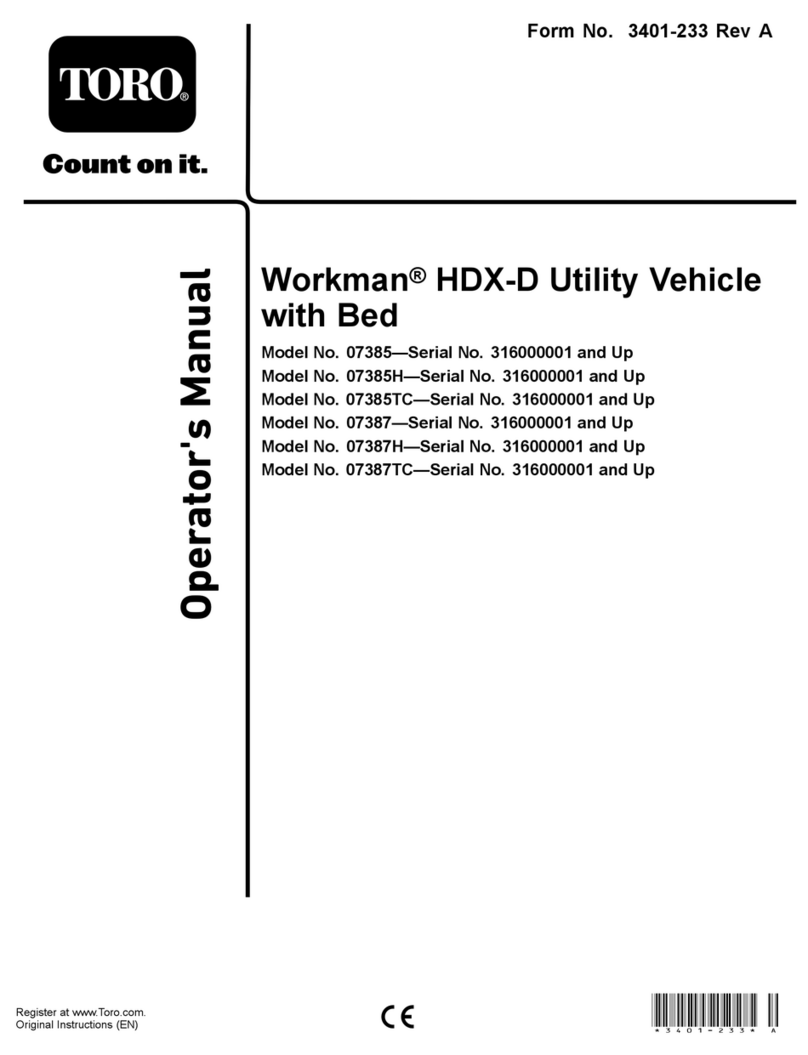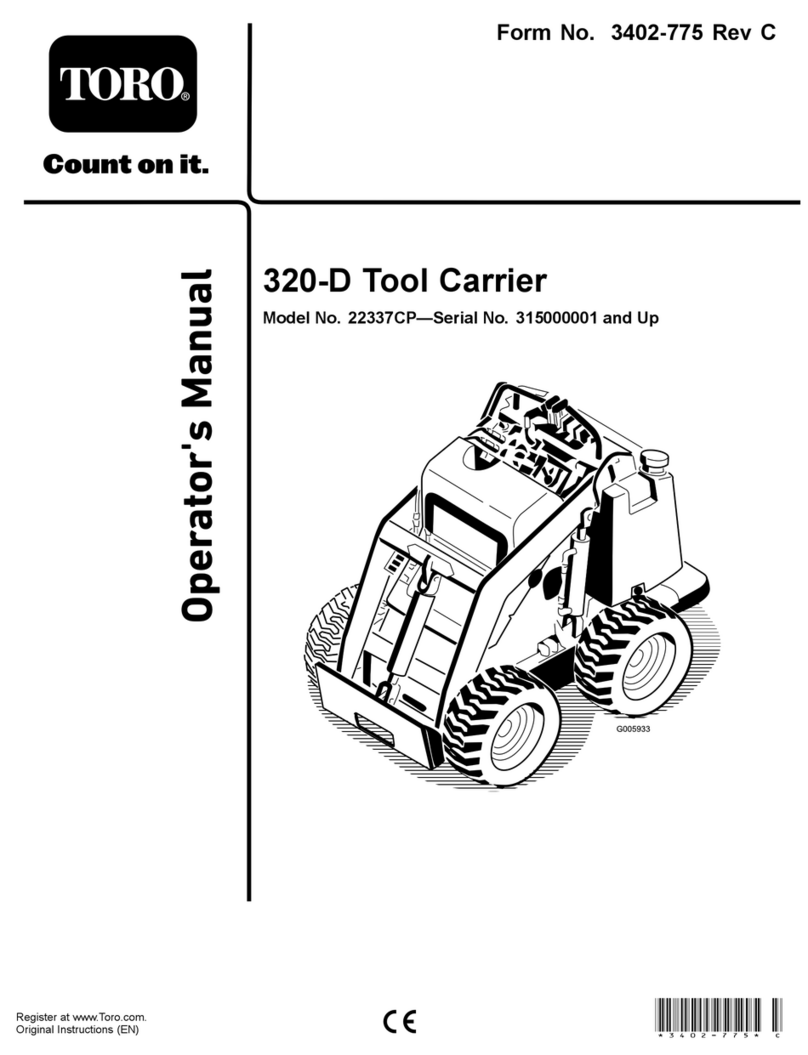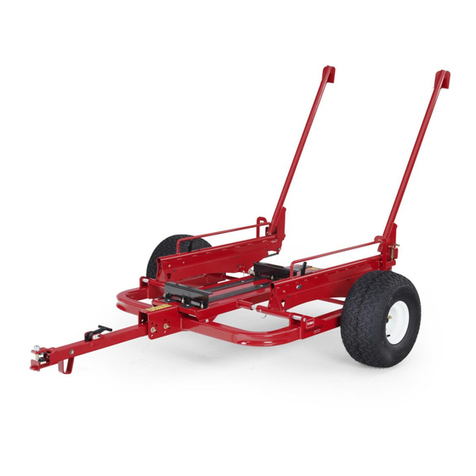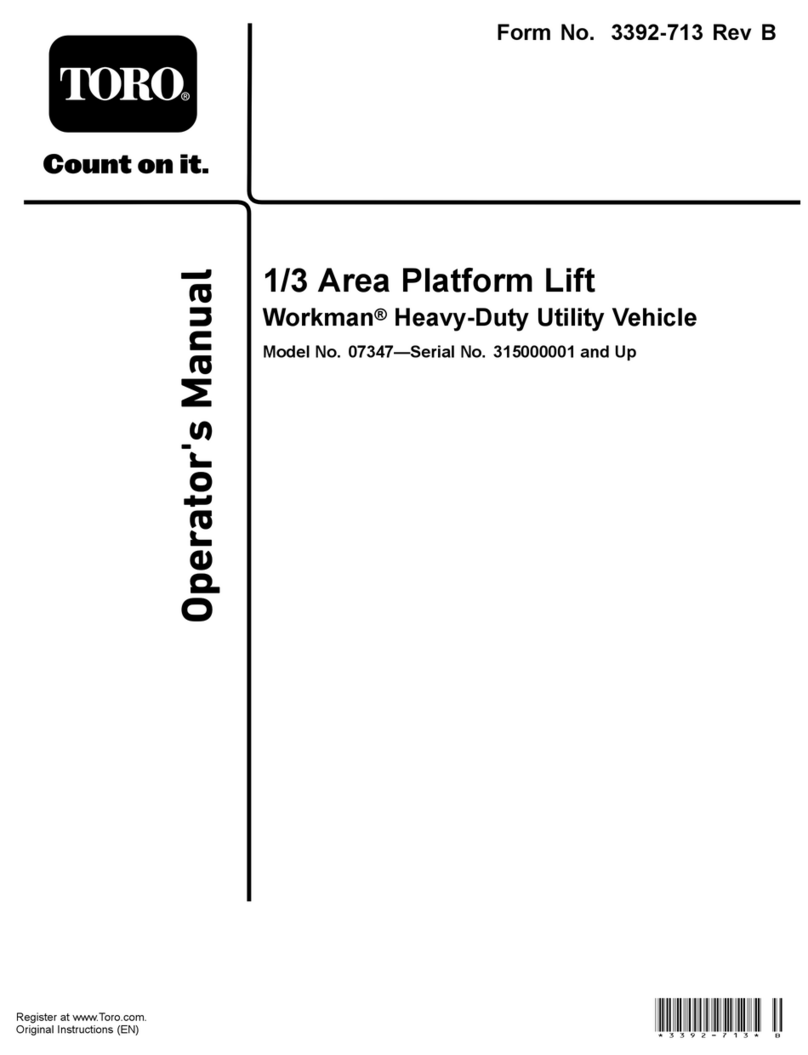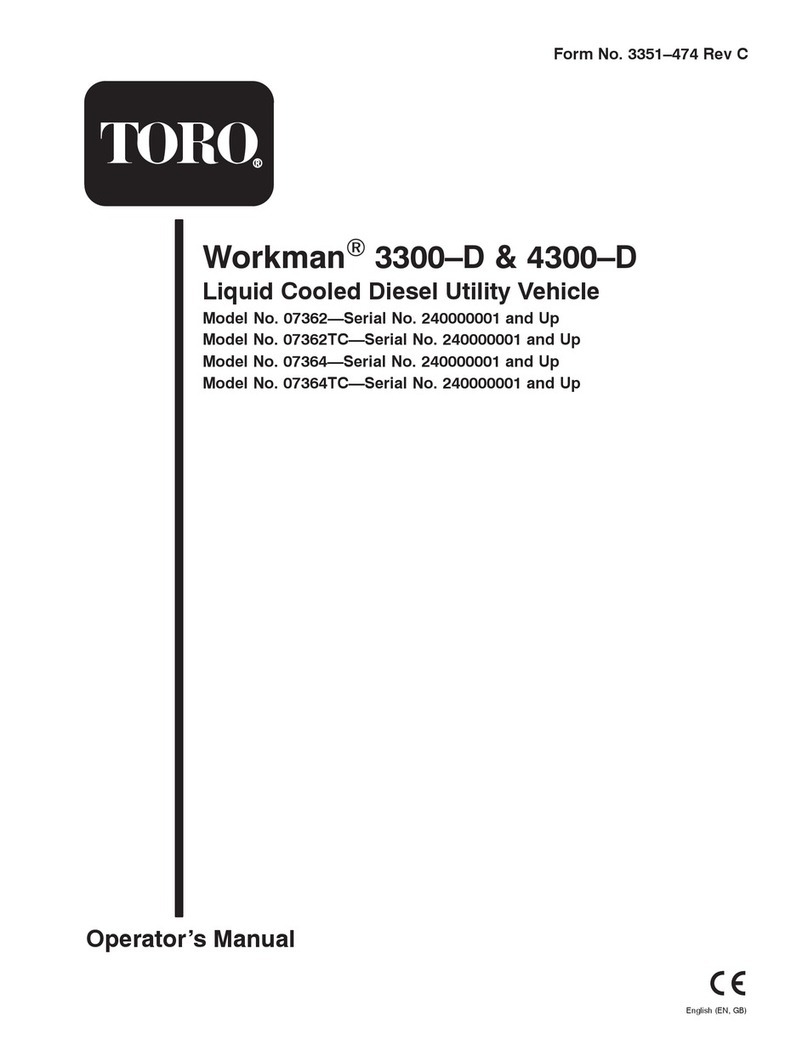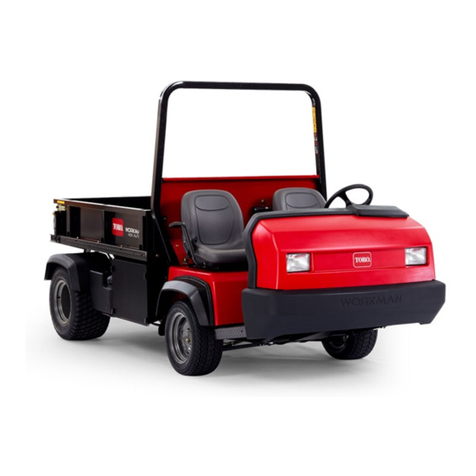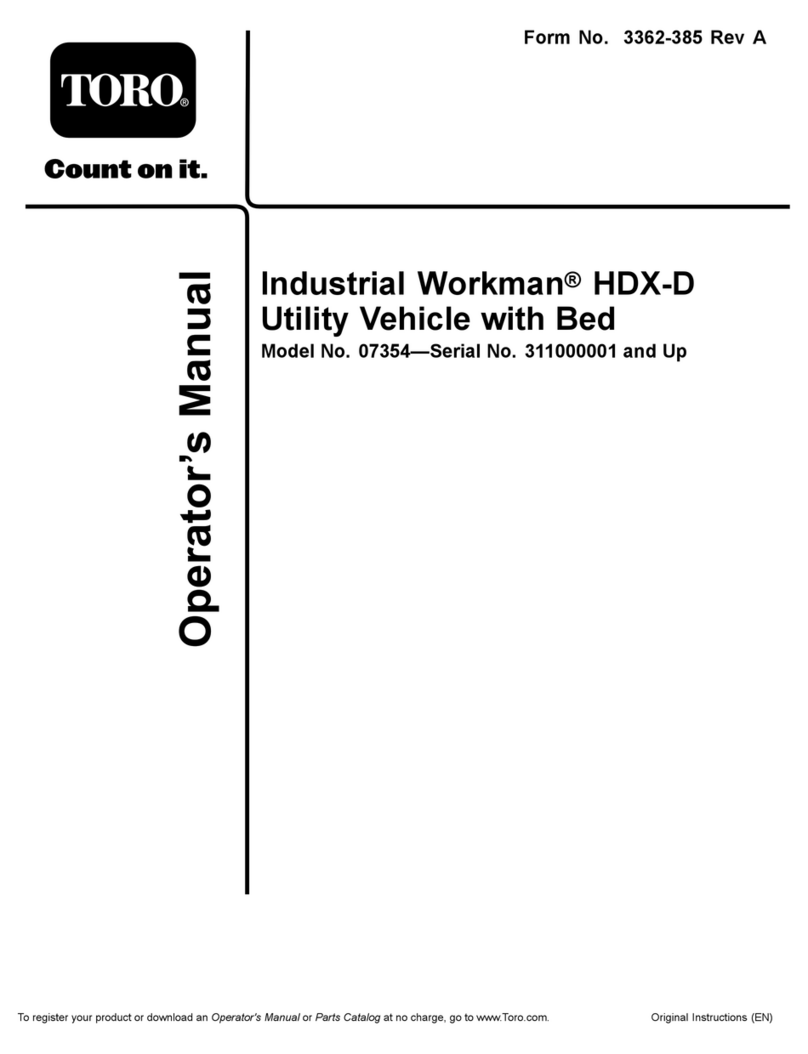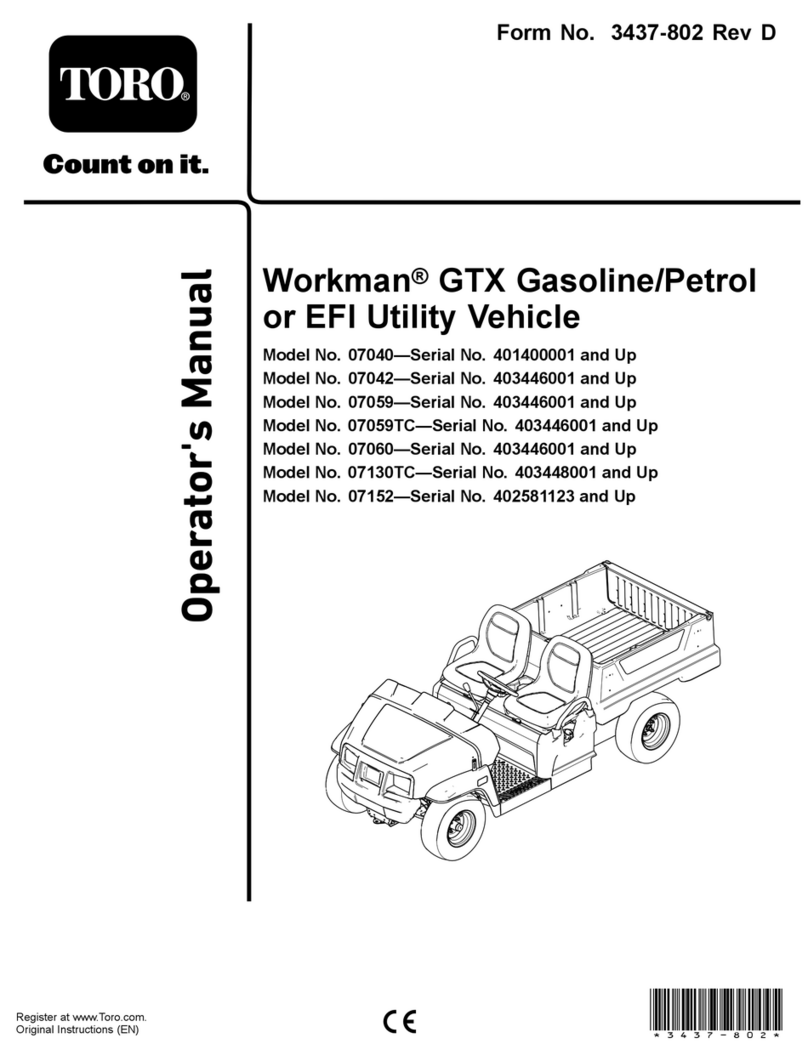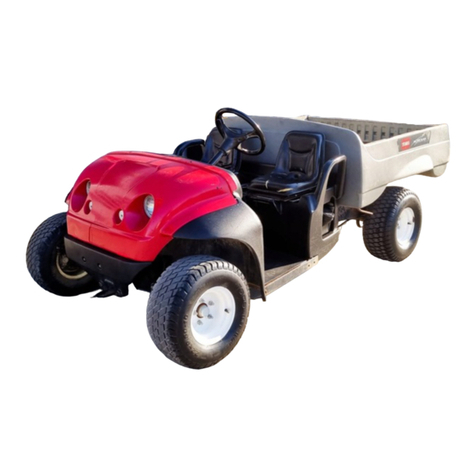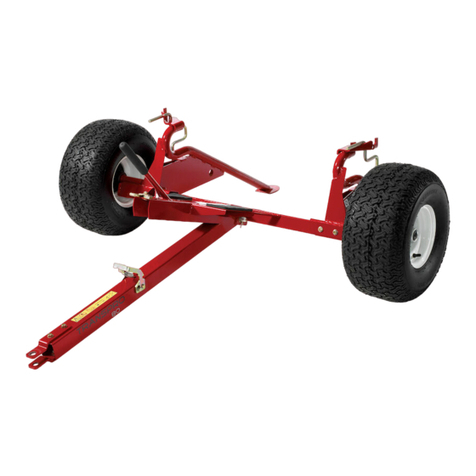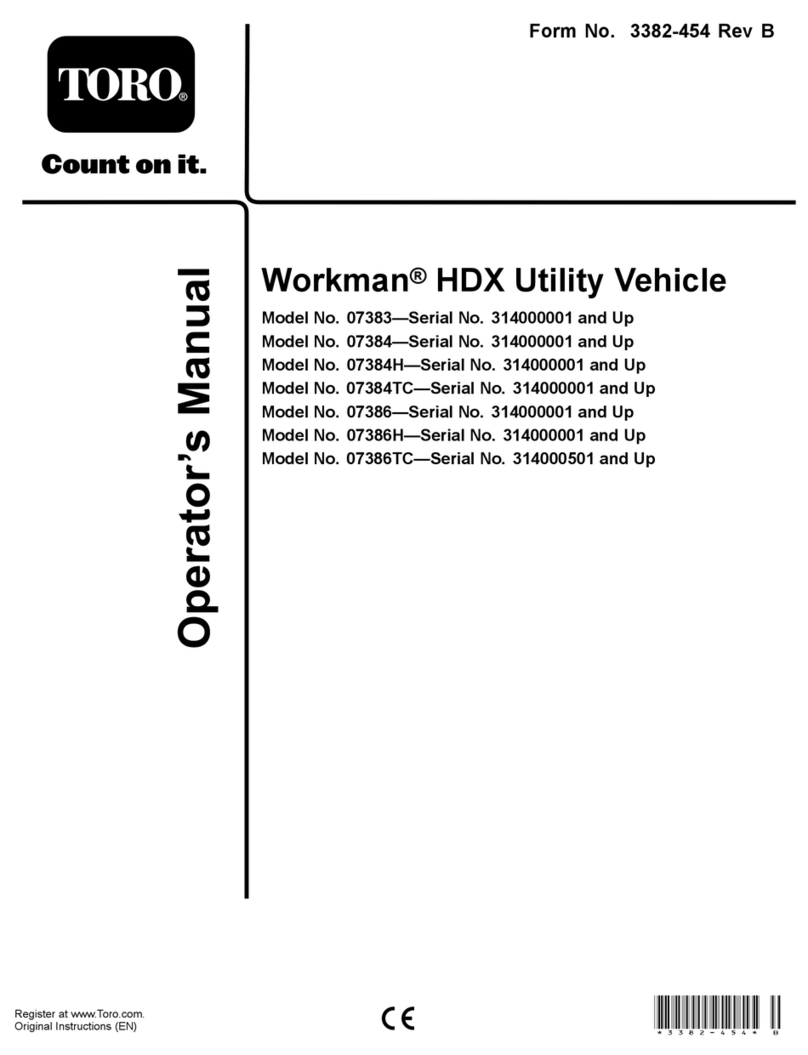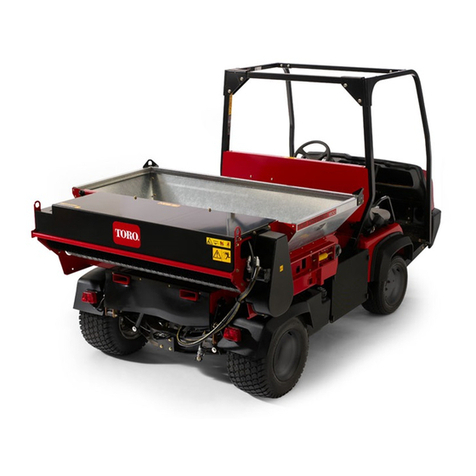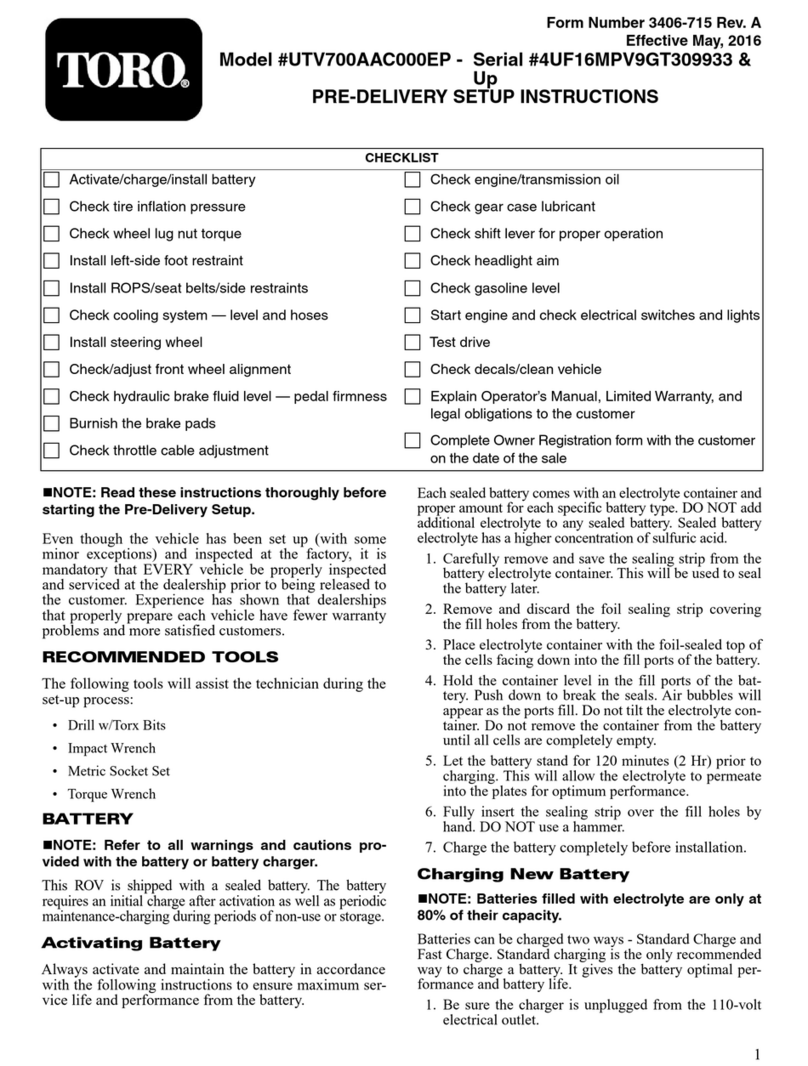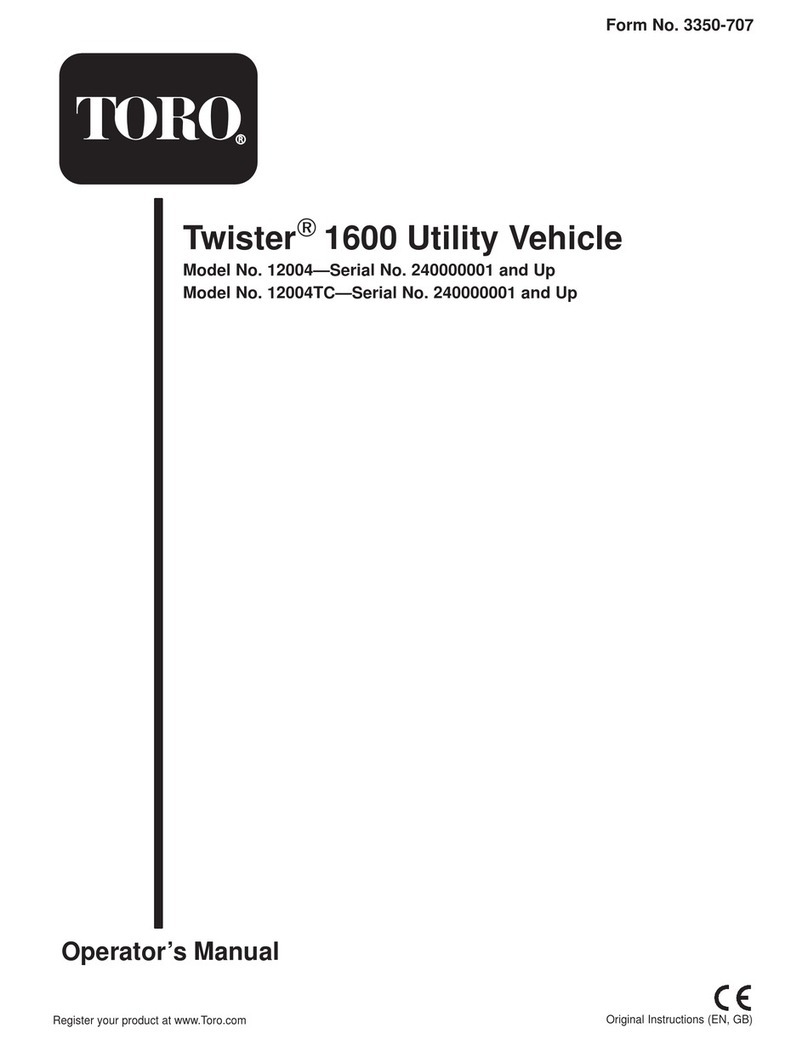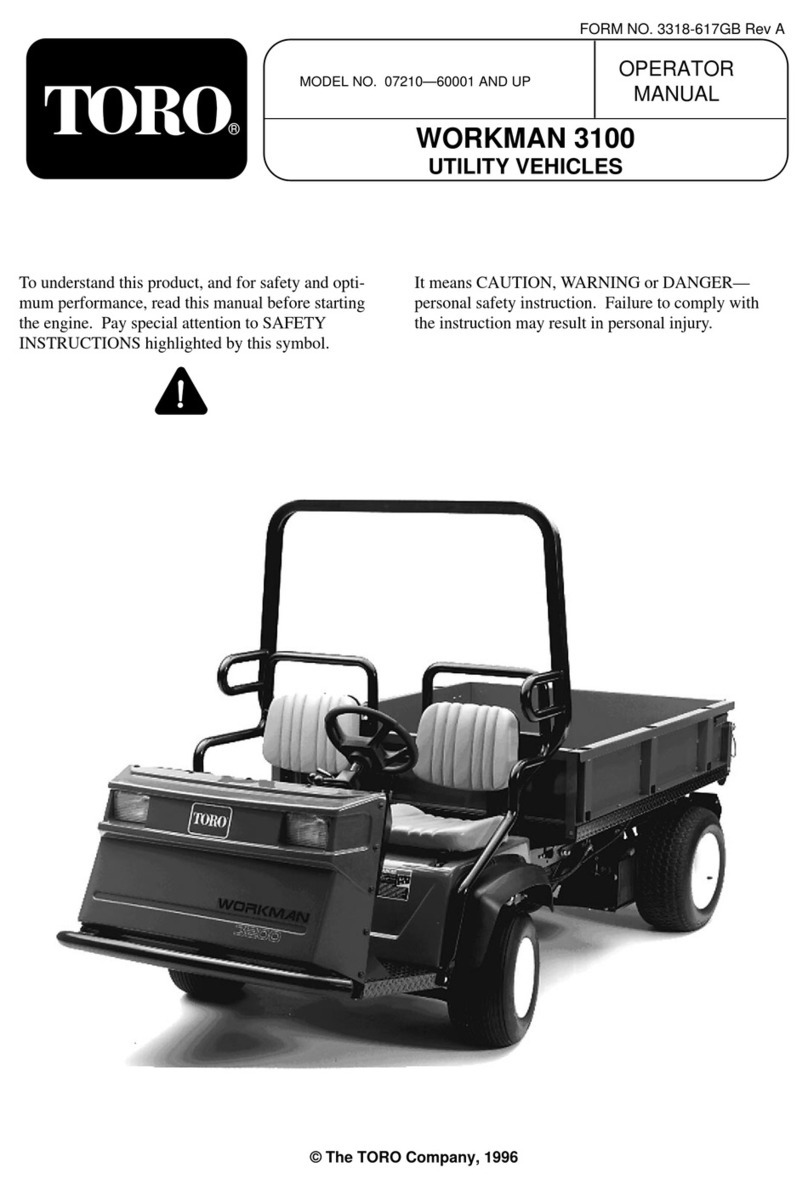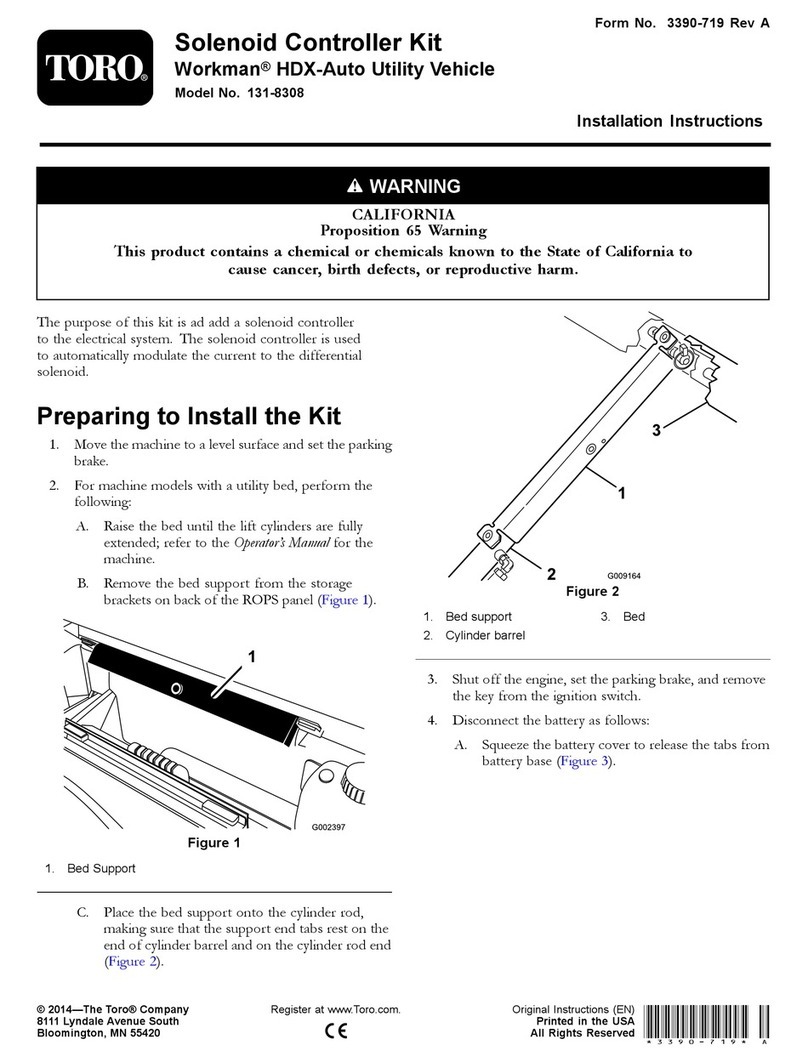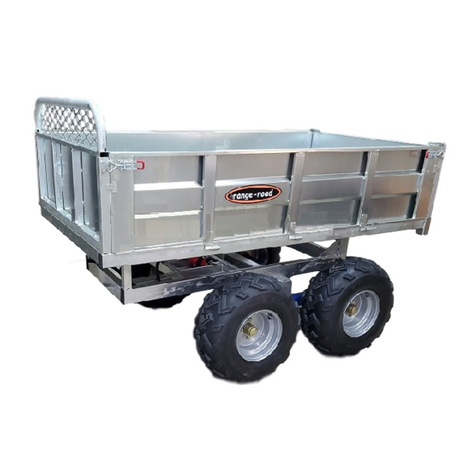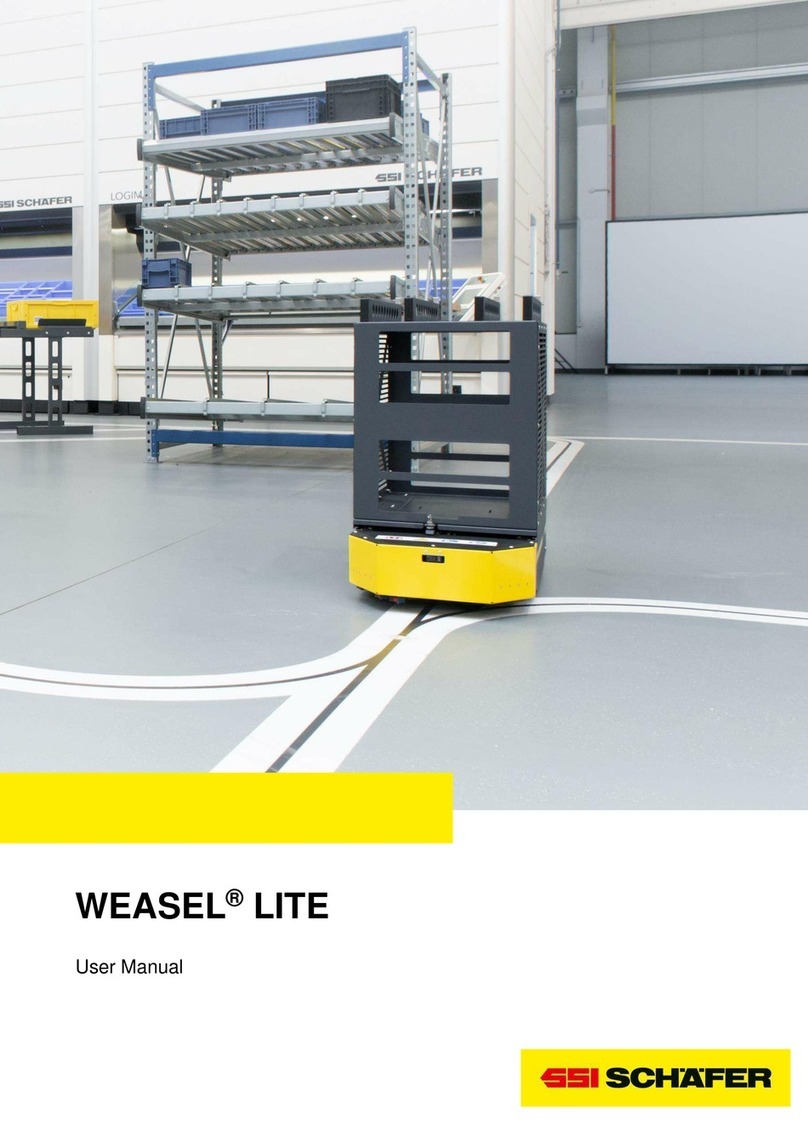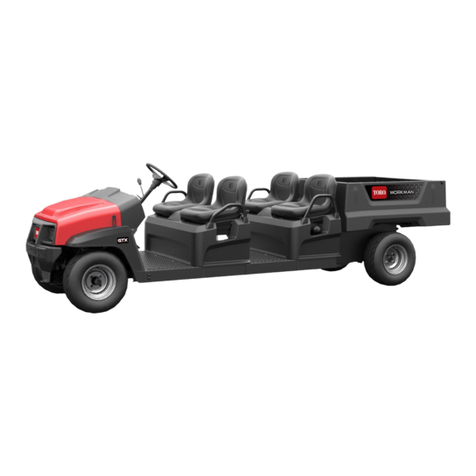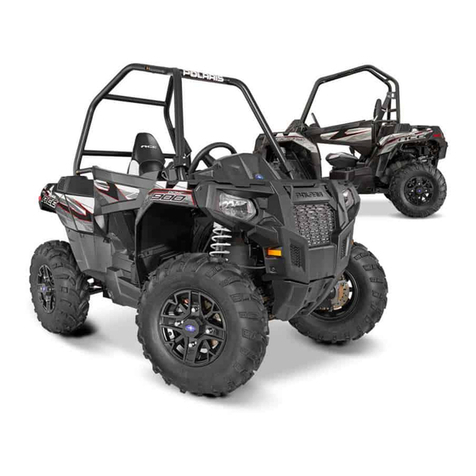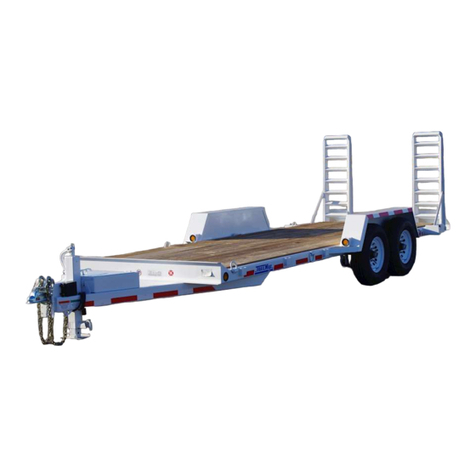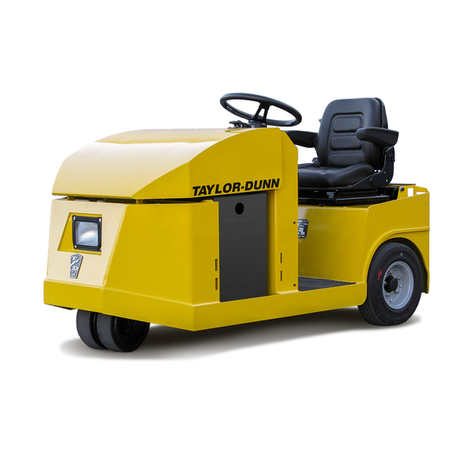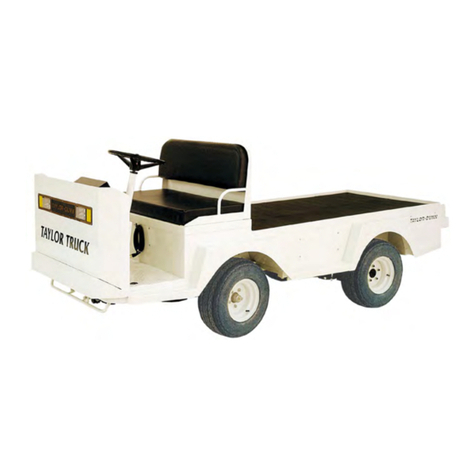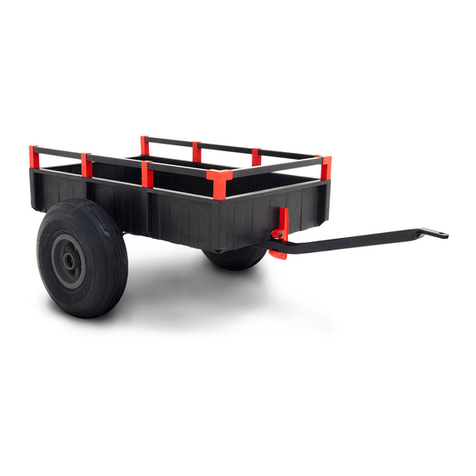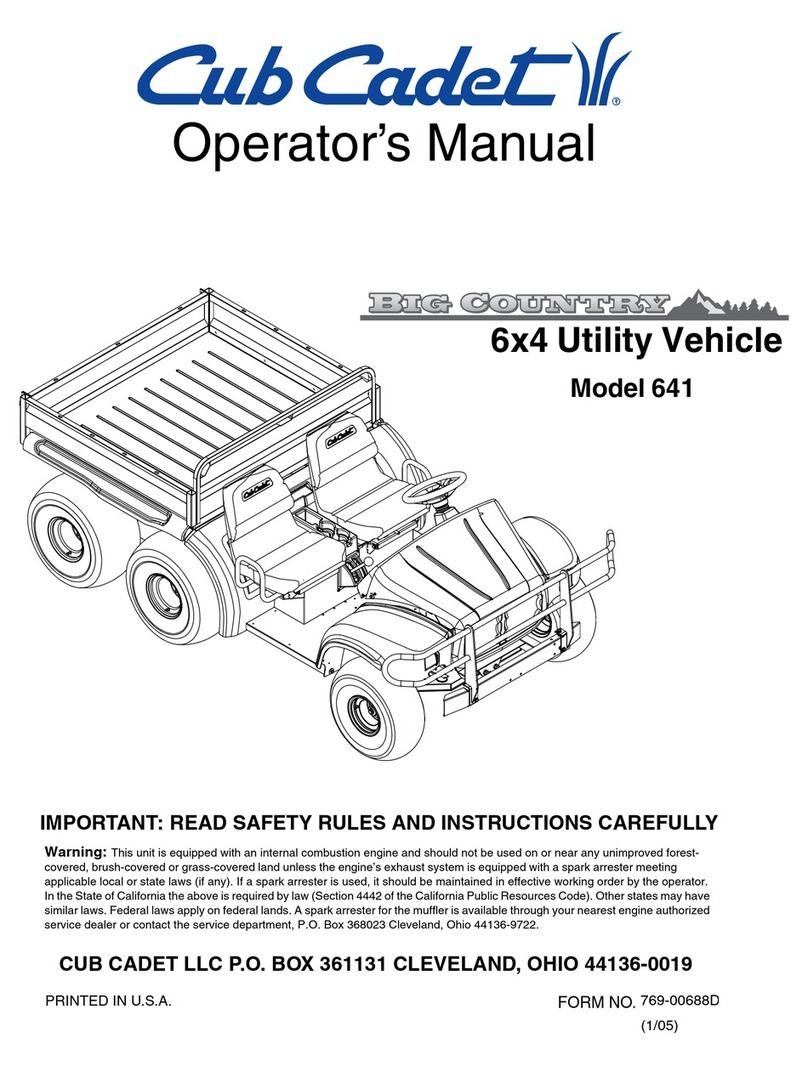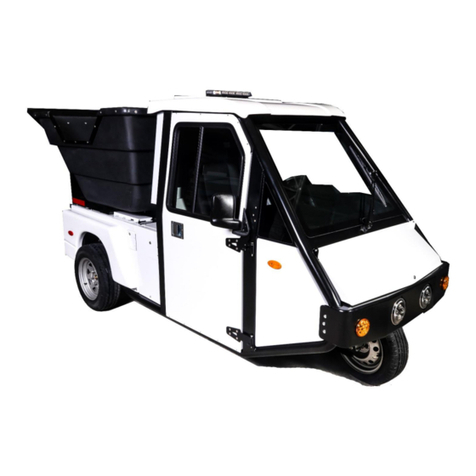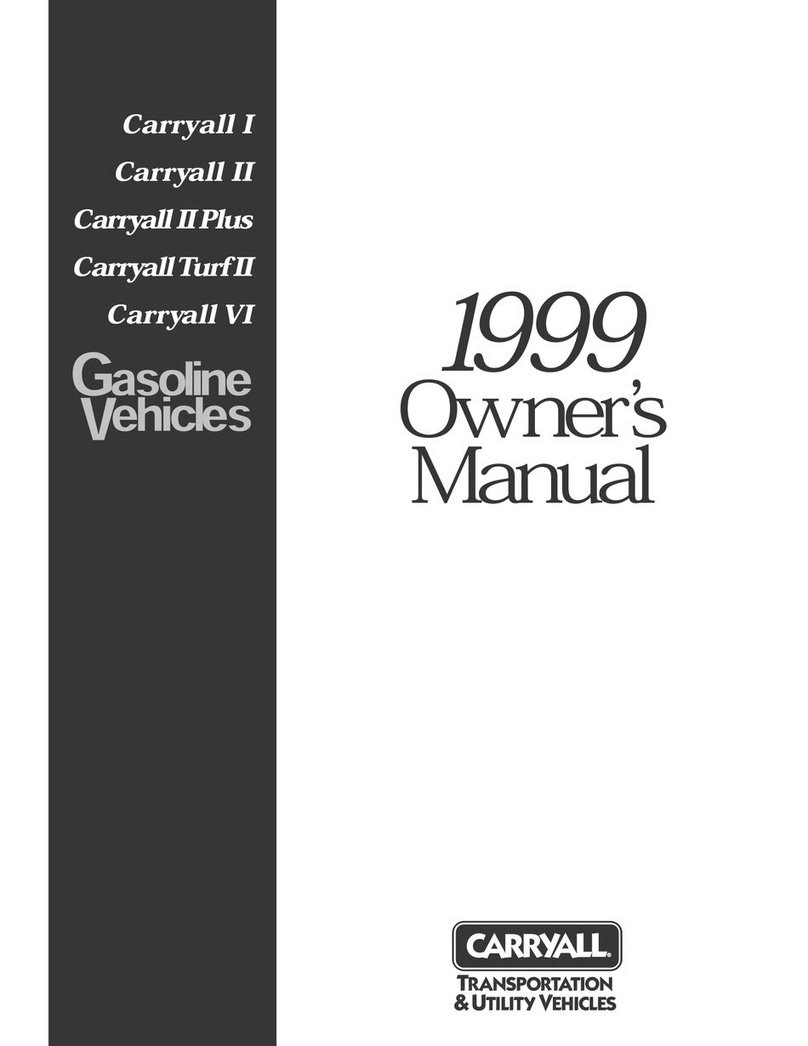
5
•Decrease the vehicle speed if the cargo box has been
removed and there is no attachment on the vehicle. The
braking characteristics change and fast stops may cause
the rear wheels to lock up, which may affect the control
of the vehicle.
•Turf and pavement are slippery when they are wet. It
can take 2 to 4 times as long to stop on wet surfaces as
on dry surfaces. If you drive through standing water
deep enough to get the brakes wet, they will not work
well until they are dry. After driving through water, you
should test the brakes to make sure they work properly.
If they do not, drive slowly while putting light pressure
on the brake pedal. This will dry the brakes out.
Operating on Hills
Operating the vehicle on a hill may cause tipping
or rolling of the vehicle, or the engine may stall
and you could lose headway on the hill. This could
result in personal injury.
•Do not accelerate quickly or slam on the brakes
when backing down a hill, especially with a load.
•If the battery runs out or you lose headway on a
hill, slowly back straight down the hill. Never
attempt to turn the vehicle around.
•Never drive across a steep hill; always drive
straight up or down or go around the hill.
•Avoid turning on a hill.
•Reduce your load and the speed of the vehicle.
•Avoid stopping on hills, especially with a load.
Warning
These extra cautions need to be taken when operating the
vehicle on a hill:
•Slow down before starting up or down a hill.
•If the batteries run low or you begin to lose headway
while climbing a hill, gradually apply the brakes and
slowly back straight down the hill.
•We strongly recommend installing the optional ROPS
Kit when operating on hilly terrain.
•Turning while traveling up or down hills can be
dangerous. If you have to turn while on a hill, do it
slowly and cautiously. Never make sharp or fast turns.
•Heavy loads affect stability. Reduce the weight of the
load and your speed when operating on hills or if the
load has a high center of gravity. Secure the load to
prevent it from shifting.
•Avoid stopping on hills, especially with a load.
Stopping while going down a hill will take longer than
stopping on level ground. If the vehicle must be
stopped, avoid sudden speed changes, which may
initiate tipping or rolling of the vehicle. Do not slam on
the brakes when rolling backward, as this may cause the
vehicle to overturn.
•Travel straight up and down slopes whenever possible.
Operating on Rough Terrain
Reduce speed and load when operating on rough terrain,
uneven ground, and near curbs, holes, and other sudden
changes in terrain. Loads may shift, causing the vehicle to
become unstable.
We strongly recommend installing the optional ROPS Kit
when operating on rough terrain.
Sudden changes in terrain may cause abrupt
steering wheel movement, possibly resulting in
hand and arm injuries.
•Reduce your speed when operating on rough
terrain and near curbs.
•Grip the steering wheel loosely around the
perimeter. Keep your hands clear of the steering
wheel spokes.
Warning
Loading and Dumping
The weight and position of the cargo and passenger can
change the vehicle center of gravity and vehicle handling.
To avoid loss of control and personal injury, follow these
guidelines:
•Do not carry loads which exceed the load limits
described on the vehicle weight label; refer to
Specifications, page 13, for vehicle weight limits. The
load rating is for level surfaces only.
•Reduce the weight of the load when operating on hills
and rough terrain to avoid tipping or overturning of the
vehicle.
•Reduce the weight of the load if the center of gravity is
high. Items such as bricks, fertilizer, or landscape
timbers stack higher in the box. The higher a load is
stacked, the more likely the vehicle is to tip over.
Distribute the load as low as possible, making sure that
the load does not affect rear visibility.
•Position the weight of the load evenly from side to side.
If you position the load toward one of the sides, the
vehicle is more likely to tip over while turning.
•Position the weight of a load evenly from front to back.
If you position the load behind the rear axle, it will
reduce the weight on the front wheels. This may result
in a loss of steering control or cause the vehicle to tip
over on hills or bumpy terrain.

